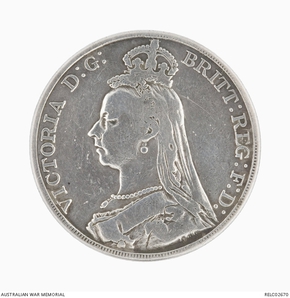STUBBINGS, Claude Henry
| Service Number: | 407 |
|---|---|
| Enlisted: | 21 August 1914 |
| Last Rank: | Captain |
| Last Unit: | 52nd Infantry Battalion |
| Born: | Zeehan, Tasmania, Australia, January 1892 |
| Home Town: | Zeehan, West Coast, Tasmania |
| Schooling: | Not yet discovered |
| Occupation: | Clerk |
| Died: | 1950, cause of death not yet discovered, place of death not yet discovered |
| Cemetery: | Not yet discovered |
| Memorials: | Lindisfarne Officers of the 12th Battalion Pictorial Honour Roll |
World War 1 Service
| 21 Aug 1914: | Enlisted AIF WW1, Sergeant, 407, 12th Infantry Battalion | |
|---|---|---|
| 20 Oct 1914: | Involvement 407, 12th Infantry Battalion, --- :embarkation_roll: roll_number: '10' embarkation_place: Hobart embarkation_ship: HMAT Geelong embarkation_ship_number: A2 public_note: '' | |
| 20 Oct 1914: | Embarked 407, 12th Infantry Battalion, HMAT Geelong, Hobart | |
| 28 Apr 1915: | Promoted AIF WW1, Second Lieutenant, 12th Infantry Battalion | |
| 4 May 1916: | Transferred AIF WW1, Second Lieutenant, 52nd Infantry Battalion | |
| 19 May 1916: | Promoted AIF WW1, Captain, 52nd Infantry Battalion | |
| 17 Dec 1917: | Honoured Military Cross, For conspicuous gallantry and devotion to duty. He took command of his battalion immediately prior to an attack, when his Commanding Officer had been wounded, and the success of the operation was in no small measure due to his initiative and good judgement.' Source: 'Commonwealth Gazette' No. 219 Date: 20 December 1917 | |
| 30 May 1921: | Discharged AIF WW1, Captain, 407, 52nd Infantry Battalion |
Help us honour Claude Henry Stubbings's service by contributing information, stories, and images so that they can be preserved for future generations.
Add my storyBiography contributed by Evan Evans
AWM Summary
Capt Claude Henry Stubbings MC, was a clerk from Zeehan, Tasmania, who enlisted in the AIF on 20 August 1914 and was appointed colour sergeant of D Company, 12 Battalion, with the service number 407. He was aged 22 and had previously served in the militia, with 91st Infantry Regiment (Tasmanian Rangers). Stubbings embarked for overseas service at Hobart on 20 October 1914 aboard the transport A2 HMAT Geelong. He was present at the landing on Gallipoli on 25 April 1915 and was promoted to second lieutenant three days later. On 4 August he was promoted to lieutenant but was evacuated sick to Malta on 21 August, suffering from severe gastro-enteritis. He rejoined his unit on Gallipoli in October. In March 1916 Stubbings transferred to 52 Battalion before leaving for service in France. He was promoted to captain in May 1916 and was appointed adjutant of the battalion in August of that year. The following month he was given the command of the battalion's A company. Stubbings was awarded the Military Cross for his actions at the Battle of Messines in 1917. The recommendation for the award reads, 'In the fighting North East of MESSINES from 7th to 11th June 1917, this Officer showed much ability and initiative. His Commanding Officer was wounded whilst leading the Battalion up to the jumping off line and he took over Command. The responsibility of assuming Command of a Battalion just prior to being committed to action was enormous, but this Officer accepted the situation courageously and the success of the Battalion's operation was in no small measure due to his initiative and acumen. He was wounded on the 10th June, whilst leading the Battalion up to the jumping off tape for the second attack.' Stubbings wounds on this occasion were slight and he was able to rejoin his unit in the same month. On 10 August 1918 he suffered a serious gunshot wound to the left thigh, which also fractured his femur. After hospitalisation in France and England his condition was sufficiently stable to allow him to be repatriated to Australia at the beginning of 1919. On arrival in Melbourne he was transferred to 11 Australian General Hospital at Caulfield, housed in a private mansion called 'Glen Eira'. Here he endured a further eight operations on his leg, between April 1919 and February 1921and also contracted osteomyelitis. While still confined to a wheelchair bed he was presented with his Military Cross by the Governor of Victoria. His bed was sometimes towed by a car to Caulfield Racecourse so that he could enjoy a day at the races. Stubbings fell in love with his hospital masseuse (physiotherapist), Catherine Campbell Bothroyd, and they married in 1921 after he was finally discharged from the AIF. He took up a soldier settler block at Red Cliffs in Victoria where he produced citrus fruit. During the Second World War Stubbings was involved with wartime manpower administration. He died in 1950.











